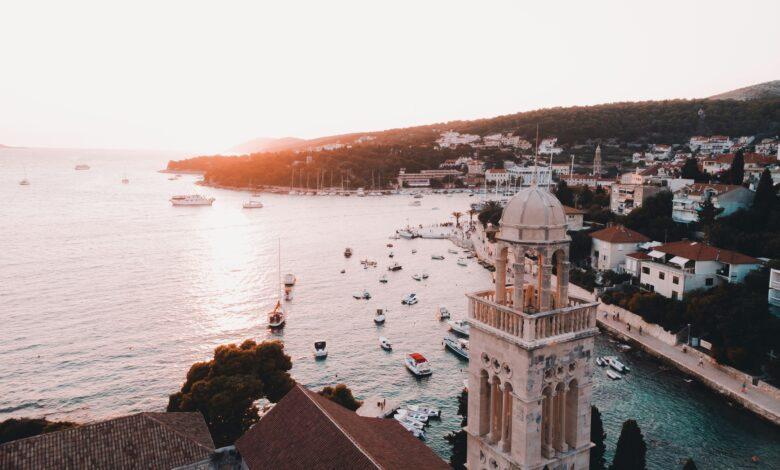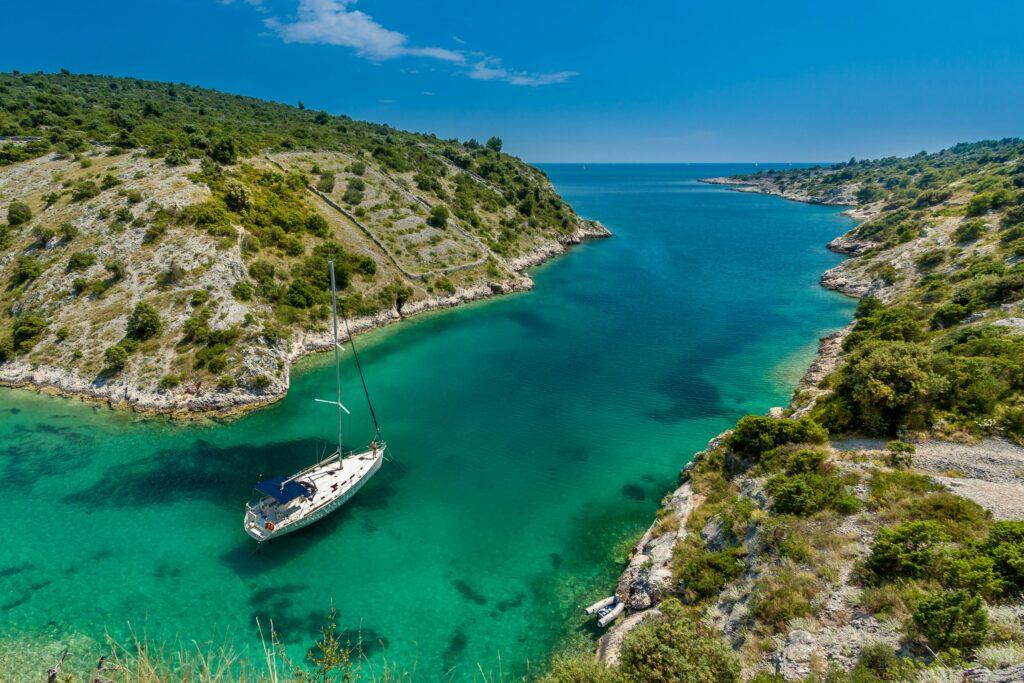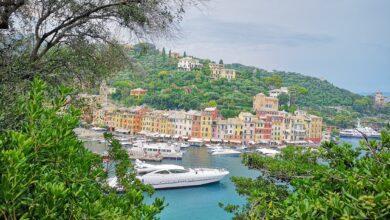🚶♂️ Walking the Medieval Walls of Dubrovnik, Croatia 🏰
Discover the Timeless Charm and Rich History of Dubrovnik's Ancient Fortifications

Introduction
Nestled along the stunning Dalmatian Coast, Dubrovnik stands as a living testament to centuries of history and resilience. This Croatian jewel, with its well-preserved medieval walls, invites visitors to embark on a journey through time. Walking the fortress-like walls provides a unique perspective on Dubrovnik’s rich heritage, offering breathtaking views, architectural marvels, and a glimpse into the city’s storied past. Join us as we lace up our shoes and traverse the historic walls of Dubrovnik, unlocking the secrets and beauty that await.
Overview of the construction and purpose
Dubrovnik’s Walls stand as a testament to both architectural brilliance and strategic foresight. Constructed between the 12th and 17th centuries, these formidable fortifications surround the historic city of Dubrovnik, Croatia. The purpose of building these walls was multifold: to protect the city from external threats, control trade routes, and establish Dubrovnik as a dominant maritime power in the Adriatic.
The walls are an architectural marvel, spanning approximately 1.2 miles in length and reaching a height of up to 82 feet in some sections. Built using a combination of limestone and mortar, the construction showcases the skill of medieval builders. The intricate design includes towers, bastions, and forts strategically positioned to provide maximum defensive capabilities.
Key historical events related to the walls
Throughout its long history, Dubrovnik’s Walls have played a pivotal role in safeguarding the city and its inhabitants. One of the notable historical events linked to the walls is the Siege of Dubrovnik in 1991 during the Croatian War of Independence. Despite sustaining damage during the siege, the walls held strong, symbolizing the resilience and spirit of the city’s residents.
The walls have also witnessed other significant events, including medieval trade expansions, conflicts with the Ottoman Empire, and the Republic of Ragusa’s diplomatic endeavors. Each stone of the walls echoes the tales of the past, making them a living record of Dubrovnik’s rich history.
Significance in preserving the city’s identity
Dubrovnik’s Walls go beyond their physical function; they serve as a poignant symbol of the city’s identity and cultural heritage. The walls encapsulate the spirit of the Republic of Ragusa, emphasizing the city’s commitment to independence, democracy, and diplomacy. Their well-preserved state reflects the city’s dedication to maintaining its historical authenticity, drawing tourists from around the world to experience Dubrovnik’s unique charm.
Inscribed as a UNESCO World Heritage Site in 1979, the walls contribute significantly to the city’s tourism and economy. The meticulous preservation of this architectural marvel ensures that future generations can continue to marvel at the historical significance and enduring beauty of Dubrovnik’s Walls.
Practical information on ticketing and opening hours
Planning a visit to Dubrovnik’s Walls involves considering practical details for a seamless experience. Tickets for accessing the walls can be purchased at the entrance gates or online. It’s advisable to check the official website for any updates on ticket prices and availability. The walls are generally open throughout the year, but it’s essential to verify the specific opening hours as they may vary seasonally. Additionally, purchasing tickets in advance can help avoid long queues, especially during peak tourist seasons.
Tips for the best times to walk the walls
To make the most of your visit, timing is key. Early mornings or late afternoons are ideal for walking the walls, providing a more tranquil experience with fewer crowds. The soft lighting during these times also enhances the picturesque views of the city and the Adriatic Sea. Avoiding midday sun not only ensures a more comfortable walk but also allows for better photography without harsh shadows. Consider checking the weather forecast beforehand to plan your visit on a clear day for optimal visibility.
Suggestions for necessary preparations
Before embarking on your journey along Dubrovnik’s Walls, it’s essential to make a few preparations. Wear comfortable and sturdy footwear, as the pathways can be uneven. Carrying a water bottle and sunscreen is advisable, especially during the warmer months, as there might be limited shade along the walls. If you’re keen on photography, ensure your camera or smartphone is fully charged to capture the breathtaking panoramic views. Lastly, familiarize yourself with the rules and regulations, respecting the historical site and fellow visitors.
Planning ahead and considering these practical tips will contribute to a rewarding and enjoyable experience as you explore the historic walls of Dubrovnik.

Description of panoramic views from the walls
Walking along Dubrovnik’s Walls offers visitors a breathtaking experience with panoramic views that showcase the city’s beauty and the Adriatic Sea. The elevated vantage points provide an uninterrupted sight of the red-tiled roofs of the old town contrasting against the azure waters. As you traverse the walls, the landscape unfolds, revealing the distant islands and the rugged Dalmatian coastline. The play of sunlight on the historic architecture and the vibrant colors of the surrounding landscape create a mesmerizing visual spectacle.
Highlighting key landmarks visible from the walls
The panoramic views from the walls encompass several key landmarks that contribute to Dubrovnik’s charm. The iconic Stradun, the main street of the old town, is easily identifiable, bustling with life and lined with charming shops and cafes. The Onofrio Fountain and the clock tower are prominent features, adding to the medieval allure. The Lovrijenac Fortress, perched on a cliff outside the city walls, stands as a formidable structure. The shimmering Lokrum Island and the distant Elaphiti Islands complete the picturesque panorama. Each turn along the walls unveils a new perspective, enriching the experience with historical and cultural significance.
Sharing personal experiences and recommendations
Having walked the walls of Dubrovnik, I can attest to the unparalleled beauty that unfolds at every step. The early morning sunlight casting a golden glow over the city and the tranquil late afternoons with fewer tourists allowed for a more intimate connection with the surroundings. Capturing the changing hues of the Adriatic at sunset is a memorable experience. I recommend taking your time, pausing at the various viewpoints, and absorbing the rich history embedded in the landscapes. Whether you’re a history enthusiast, a photography lover, or someone seeking a serene escape, the panoramic views from Dubrovnik’s Walls promise an unforgettable journey.
Discussion on the design and construction of the walls
Dubrovnik’s Walls stand as a testament to the architectural brilliance of medieval craftsmen and the strategic vision of the Republic of Ragusa. The design and construction of these walls, spanning from the 12th to the 17th centuries, reflect a harmonious blend of functionality and aesthetic appeal. The use of locally sourced limestone and intricate masonry techniques resulted in a formidable structure that seamlessly integrates with the natural landscape. The walls, reaching a height of up to 82 feet in some sections, showcase the engineering prowess of the time, ensuring the city’s protection and solidifying its status as a maritime power.
Unique features and structures along the way
As visitors traverse Dubrovnik’s Walls, they encounter a myriad of unique features and structures that contribute to the architectural marvel. The Minceta Tower, the highest point of the walls, provides a commanding view of the surroundings. The impressive Fort Revelin, built to withstand cannon fire, showcases military innovation. Along the way, bastions, turrets, and forts punctuate the walls, each with its own historical significance. The renowned Pile Gate and Ploce Gate serve as grand entrances, welcoming visitors to the enchanting world within. The strategic placement of these structures not only adds to the visual appeal but also emphasizes the city’s commitment to defense.
Appreciation of the defensive elements of the walls
Beyond their aesthetic value, Dubrovnik’s Walls are a testament to the city’s commitment to defense and security. The walls were ingeniously designed with defensive elements such as arrow slits, watchtowers, and strategically positioned forts. The thickness of the walls served as a deterrent to invaders, and the clever arrangement of bastions allowed for comprehensive defense. The system of gates, drawbridges, and moats showcased a comprehensive approach to fortification. Walking along the walls provides a firsthand appreciation of the military strategy embedded in their design, offering a glimpse into the historical context of Dubrovnik’s need for protection and its resilience in the face of external threats.
FAQs
Q. Can you provide some information about the Medieval Walls of Dubrovnik, Croatia?
A. The Medieval Walls of Dubrovnik are a series of defensive stone walls surrounding the Old Town of Dubrovnik, Croatia. Built between the 12th and 17th centuries, these walls are well-preserved and offer stunning panoramic views of the city and the Adriatic Sea.
Q. How long does it take to walk the entire length of the walls?
A. The walk along the Medieval Walls typically takes around 1.5 to 2 hours, depending on your pace. It’s approximately 2 kilometers (1.2 miles) in length, and you’ll want to take your time to enjoy the scenery and take in the historical landmarks along the way.
Q. Are there any entrance fees to access the walls?
A. Yes, there is an entrance fee to access the Medieval Walls. The fee varies, and it’s advisable to check the current prices before your visit. Keep in mind that the experience and views make the fee worthwhile.
Q. What are the best times to visit the Medieval Walls of Dubrovnik?
A. It’s recommended to visit early in the morning or late in the afternoon to avoid the peak heat of the day and crowds. This allows for a more pleasant and leisurely walk along the walls.
Q. Are there any guided tours available for the walls?
A. Yes, guided tours are available, and they can enhance your experience by providing historical insights and anecdotes about Dubrovnik. Check with local tour operators for availability and schedules.
Q. Are the walls accessible for people with mobility challenges?
A. Unfortunately, the walls are not easily accessible for those with mobility challenges as there are numerous steps and uneven surfaces. It involves a considerable amount of walking and climbing stairs.
Conclusion
As the sun sets over the Adriatic horizon, and the echoes of history resonate within the fortified walls, one cannot help but be captivated by Dubrovnik’s timeless charm. The experience of walking the medieval walls transcends mere sightseeing; it is a profound encounter with a living history, a connection to the resilience of a city that has withstood the tests of time. So, as you bid farewell to the panoramic views and ancient stones, carry with you the echoes of Dubrovnik’s tales, and let this journey serve as a reminder that our steps, like those on the historic walls, contribute to the ongoing story of this remarkable city.
UP NEXT
https://touristeyes.com/exploring-the-ancient-mayan-ruins-of-copan-honduras/





Facebook Comments